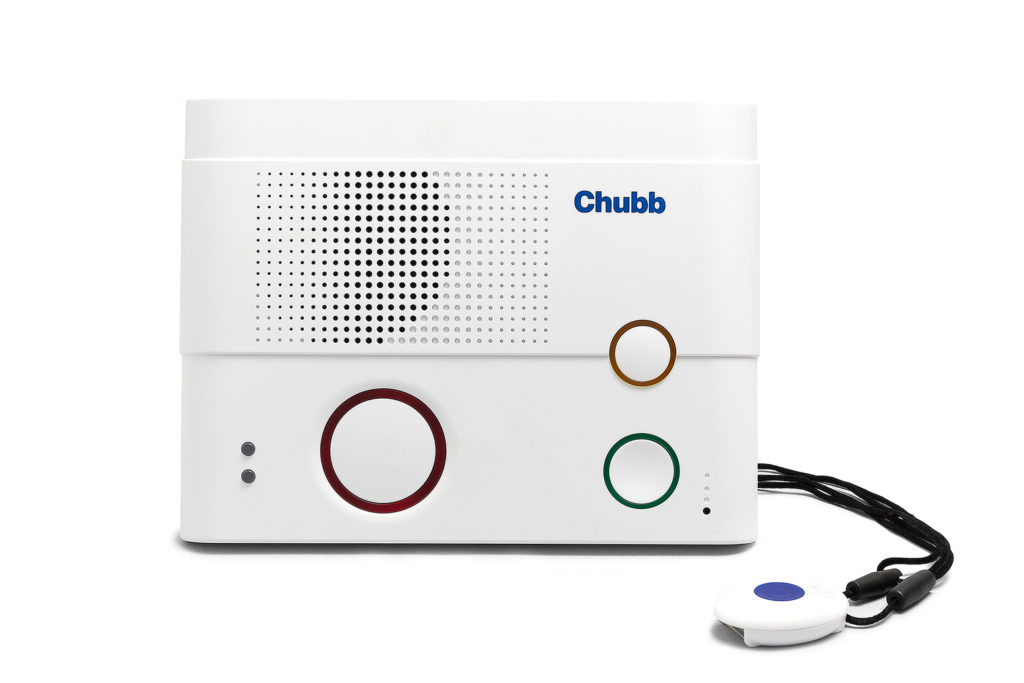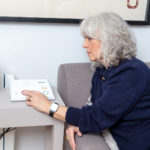Charlotte Rathbone, Product Account Manager at Chubb, examines the ongoing transformation of the UK telecommunications industry and how the shift to digital technology will affect telecare provision for local authorities.
According to the Technology Services Association, the representative body for technology enabled care, more than 1.8 million vulnerable people* rely on telecare in the UK. In most cases, telecare consists of a care alarm in a person’s home, which when triggered by pressing a button or an automated sensor, sends data via the Public Switched Telephone Network (PSTN) to a monitoring centre, where an operator will give advice or seek help.
The UK telecommunications industry however is undergoing rapid change. By 2025* all analogue telephone services across the UK will be switched off as infrastructure is upgraded to digital connectivity. This approaching switch highlights the need for dedicated digital telecare solutions.
So how will this affect telecare services in the UK?
As early as 2023*, British Telecom (BT) customers may not be able to buy an analogue phone line. Instead, BT will move its customers to a digital internet protocol network in readiness for the shutdown of traditional telephone lines in 2025. It’s then that we’ll see the PSTN and all Integrated Services Digital Network lines switched off. These lines are currently used by many telecare services to feed alarm data into their monitoring centres.
While the digital migration is underway, analogue telecare alarm services are reporting a rise in the number of failed alarm call attempts — with one service provider reporting a failure rate of 11.5% for the first alarm attempt*. This is concerning.
Another concern is failed care alarms through loss of power. When analogue alarms run on a digital network, they require a router to be plugged in at home. In the event of a power failure, this router will stop working, so if a vulnerable person triggered their alarm, it would duly fail.
It’s little surprise that telecommunication providers and Ofcom are recommending a shift away from traditional analogue devices to digital devices to ensure consistency of access to care*. Some countries including Sweden are ahead of the curve when it comes to switching to digital. More than 95% of Swedish digital alarm installations now use mobile network connections*. There is some way to go in the UK.
Why switch now?
Currently there are approximately 1.6 million analogue telecare devices** across the UK that need to be changed to digital-dispersed alarm units (DAUs) so it’s going to be a gradual process. There are however benefits for telecare service providers that make the change sooner rather than later.
It might sound obvious but as we approach the switchover date, the time to replace analogue units in the field reduces. This will likely result in significant resource pressures for customers to complete the transition; by switching early, this can be completely avoided.

Which digital solution to adopt?
Options exist to adopt either an ethernet only solution, which will connect to an alarm receiving centre (ARC) via the user’s own broadband provider or a multiple pathway device, which offers both broadband connectivity and the option of a cellular connection based on 2G, 3G or 4G technology.
Although the broadband solution provides a digital connection, this approach does have inherent issues. Relying purely upon a broadband internet connection leaves users vulnerable to broadband outages and power failures, which will incapacitate most broadband hubs, as they are not routinely supplied with battery backup capability.
Choosing a multiple pathway solution eliminates this issue. In the case of a broadband outage or power failure, the DAU can automatically switch to a cellular digital connection to access the internet. By choosing a device with a ‘roaming’ SIM, this will ensure further resilience of the DAU/ARC connection, should signal strength from a provider drop off. In this instance, the SIM will ‘roam’ to the next strongest signal to maintain connectivity. Alternatively, where there is no available broadband internet connectivity, the cellular connection will provide the primary connectivity to the ARC.
Cellular connectivity choices
When it comes to the choice of 2G, 3G or 4G connectivity, some confusion exists within the marketplace as to which solution to adopt. Although many believe that the UK 3G cellular service will likely be switched off by 2025, 2G technology is expected to survive in some form or other until the end of the decade. However, the question as to the support cellular providers will continue to offer for what is now an aging technology, must be raised. Consequently, if the aim is to futureproof what will be a significant investment for many telecare providers, the only real option is to invest in products with 4G connectivity.
Ease of switchover
Switching from an analogue to a digital care alarm is a simple process and one which Chubb can now facilitate with the recent launch of CareUnity Digital — the new, futureproof DAU that supports the latest 4G technology and multiple communication pathways. The process involves unplugging the customer’s existing analogue unit, plugging CareUnity Digital into a main’s socket and programming existing peripheral devices into the unit before placing a test call to the ARC. There is no need for new cables and CareUnity Digital can also be configured remotely through our web-based portal. It has also been designed to be backward compatible with our existing range of 869MHz telecare and F1 devices.
As with any upgrade, it is natural that some service providers will be deterred by the expense. To help make the transition smooth and cost-effective, Chubb is offering a range of flexible buying and rental options allowing service providers to control costs.
To find out more about CareUnity Digital, visit www.careunitydigital.co.uk.
*TSA 10 Facts about Analogue to Digital: How it will affect telecare
** TSA survey of service provider members, May 2021.
Header image shows the CareUnity Digital solution, which can be easily customised to meet customers’ varied needs.









